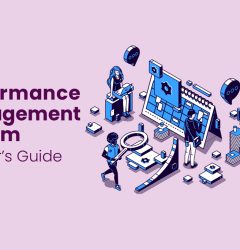Organizations need to prepare ahead through the HR process to correct the effects of the pandemic in different ways. The areas of prioritization would include:
- Redesigning work processes
- Redesigning workforces
- Redesigning organizational processes
- Succession management and planning
- Strategizing for work in the future
Stay aware of changing trends in work to adopt them
Learn how PossibleWorks can help you
It comes as no surprise that we find workforce redesign and work redesign and navigation of ongoing shifts in work trends at the top of this list, right alongside building critical skills and competencies, leadership bench, and employee experience.
Redesigning Work
As the world is forced to digitize and businesses are forced to take many of their operations online, many organizations are hit with a sudden need to encourage their employees to develop new skills. Their original estimates and predictions of the skillsets needed by their employees are not really relevant anymore. Employees today need to acquire more skills so as to work virtually and deliver right, while on the same job. Learning these new skills is imperative even if they do not know if these skills are for their personal development or the benefit of their organization. To illustrate, most people who never even set up a Skype account or initiated a Zoom call are now constrained to adopt such technologies to ensure that they get on a team video call about that day’s challenges and deliverables. Teachers cannot depend on blackboards and lab equipment to describe and demonstrate their lessons. They need to convey everything to a video camera and interact with their students, while everyone struggles with choppy network connections which prove unreliable half the time. The role of HR in setting up a digital workplace with smoothly managed processes involves adjusted HR processes as well as remote management and communication processes.
Redesigning Workforces
As businesses continue to function without violating any social distancing norms, some are forced to restructure their teams and move current employees into whole new roles. Managers are being made to work virtually with their teams and getting them to deliver in spite of the challenges all around. Many are suddenly shouldering completely new tasks and responsibilities and working hard to ensure that their business is not affected negatively, and work continues apace. This situation is forcing employers to adopt a dynamic approach to reskilling and redeployment. HR teams are partnering with the affected teams to assess the shift in skill needs and to make plans to develop the needed skills in a timely fashion. Identifying and addressing the skill needs of stakeholders is made possible by HR teams, which track labor market statistics on the one hand and monitor the changes in organizational skill needs on the other. Even as they bring external candidates to fill the skills gap, HR will also need to identify internal candidates who can absorb the new skills quickly when they are imparted. They need to also plan to accelerate skill development to meet the need on time, and also explore and identify learning delivery models and opportunities. HR can also help employees make informed decisions to choose the skillsets needed by the organization.
Change Management in Designing Organizational Processes

Organizational design and change management are critically important to a business and its operating processes.
Organizations must aim to create agile processes that allow an organization to respond as quickly as conditions require to any situations and challenges, when and if they crop up. HR teams are also looking for flexibility in work structures and work designs along with the original focus on efficiency which made change quite difficult for many organizations, over the years. When a working design is misaligned, it creates friction between employees, employees work without responsiveness and processes get too rigid to accept any new ideas or approaches.
As HR teams redesign work to enable employees to be more responsive, they need to adapt their approach in such a way that future changes are factored in and the changes are responsive to customer needs. There’s also a pressing need to mitigate the effects of change and build resilience into the processes and build flexibility without sacrificing efficiency. Simplification of permission processes can help to ease the rigidity of processes. The aim would also be to keep making regular adjustments even as resourcing decisions are made with a high level of flexibility to meet unexpected contingencies, should they manifest.
Succession Management and Planning
Succession management at the top and middle levels is always an HR priority as well as a challenge, making it hard to find effective and decisive leaders exactly as the need arises. Leaders in many organizations lack diversity and many of them find it hard to win the confidence and trust of their underrepresented teams. Such a lack of trust in leadership becomes a bigger issue in a crisis and could even undermine the authority of the leader. HR needs to be alert at all times to ensure the diversity of its leadership cadre by providing the support and mentoring needed to help promising candidates to grow internally. They may also recruit the right candidates externally to maintain the desired level of diversity on their leadership team. Especially when facing a crisis, employees need a support network that understands their issues and meets their specific needs. Such a focus would help engage underrepresented talent, groom them to play bigger roles, and indirectly benefits the organization itself to reach new heights.
Strategizing for Work – In the Future
Technology has always threatened the livelihoods of some people. From mechanization to AI and machine learning, every technological development has exerted negative effects on planning work and displaced workers too. All organizations focus energies on setting a strategy for managing work in the future, where they will not only factor in the effects of contingencies caused by pandemics but also technology. This makes it imperative for HR teams to align their strategies to changing market needs and the tools which facilitate the delivery of services to organizations. The current pandemic has wiped out the opportunities of some businesses, curtailed travel, and forced education to go online. Even as we talk about post-COVID-19 strategies, none of us can assuredly set a date to when it would start. Many countries are bracing for a second or third wave of the virus while vaccines to contain its spread are still passing through the stages needed for approval. All the efforts we are making today are not going to be discarded soon. Some of them will be here for the long haul and we will all have to adjust to them and accept them.
With the pandemic likely to stay much longer than anyone would have imagined, we see a number of changes to work processes as we know them. HR teams need to watch the trends and pick any that are relevant to their own operations and processes as they prioritize productivity without affecting the safety of their teams, employee engagement as well as experience. They will also need to ensure that their priorities are synchronized with the priorities of the business and its culture and its goals. The current situation may also have affected performance goals, but the operations can be brought back on track with the effective intervention of the HR team and its decisive plans for the future.



